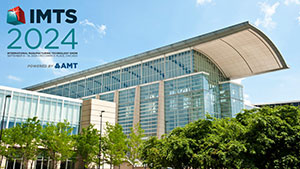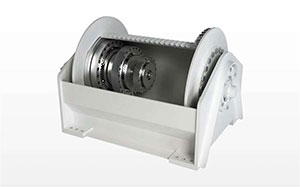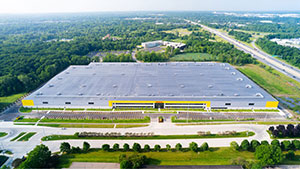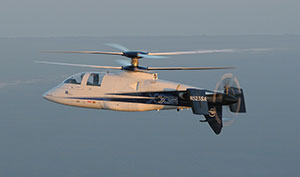
[please visit our sponsor]

Convoloid Gearing: Case Studies with a New Type of Gear Technology
August 7—Free Emerging Tech Webinar
This webinar will detail new design and rating procedures where (2) Convoloid gear box design variants are compared to a well-established industrial gearbox (the baseline) for several critical gear rating and surface condition factor parameters resulting in power density increases of 15% to 20%. The webinar will detail design procedures and rating criteria directly compared to the involute baseline unit.Register Now

Reverse Engineering
August 14–15—Live Online Course
Reverse engineering a gear system is a not too unusual task and in many, but not all, cases the process goes fairly well, thus it is easy to become complacent. It is important, however, to fully understand the process and the best practice procedure for reverse engineering a gear system. Failure to fully follow best practice can result, at best, in an unhappy gear user, but in the worst case it can lead to very expensive, time-consuming and reputation-damaging litigation.Register Now
How to Read and Interpret a Gear Inspection
August 20—Live Online Virtual Training
This half-day online seminar is intended to provide you with a thorough understanding of the information contained within a typical gear inspection report. Specifically, we will look at the contents and meaning of the information contained within the gear charts, as well as the techniques used by the gear measurement system to assess gear quality.Register Now
Design Basics for Spur and Helical Gears
September 10—Live Online Virtual Training
Learn how to develop and understand customer gear drive application specifications and target performance expectations. Review, calculate and select basic gear terminology variables and design parameters that define tooth bending and contact rating safety factors on two real-life examples. Use commercially available software to develop gear geometry factors, and calculate and optimize gear set power density and performance.Register Now
Basic Training for Gear Manufacturing
September 16–20—AGMA National Training Center; Chicago
Learn the fundamentals of gear manufacturing in this hands-on course. Gain an understanding of gearing and nomenclature, principles of inspection, gear manufacturing methods, and hobbing and shaping. Utilizing manual machines, develop a deeper breadth of perspective and understanding of the process and physics of making a gear as well as the ability to apply this knowledge in working with CNC equipment commonly in use.Register Now
[please visit our sponsor]


Smart Move: Save Big with a CNC Recontrol
It’s hard to stay competitive with older gear machines using outdated controls. New machines are often too costly a solution – and you’ll wait months for delivery. The smart move is an MTB Recontrol. In just three months, and for a relative fraction of a new machine investment, we can recontrol most CNC gear machines – and bring them up to profitable new performance levels.
Learn more. Download the Whitepaper
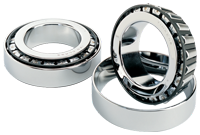
Revolutionize Gear Efficiency with Timken® Bearings
Members of AGMA can significantly reduce energy consumption and costs in their and their customers’ operations with Timken® EnviroSpexx™ roller bearings. Discover how these advanced bearings optimize efficiency and support sustainability goals. Read the whitepaper to learn more about the benefits and review a case study. Download now for details.
Download Whitepaper
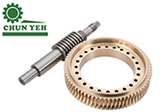
Embracing Efficiency: The Power of WORM Drives (CHUN YEH GEAR)
In today's pursuit of efficiency, worm drives combine worm gear and worm for unmatched power transmission. Compact and with high gear reduction, they're necessary for precision applications across industries.
CHUN YEH GEAR can manufacture - Max. Module: M10, Accuracy Capability: DIN 1, AGMA 14, JIS 0.
Read More
IMTS 2024 Will Be Here Before We Know It
Gear Technology
The International Manufacturing Technology Show (IMTS) September 9–14 at Chicago’s McCormick Place is fast approaching and, for newcomers and veterans alike, it is always worthwhile to plan as much as possible in advance to make the most of it. For Gear Technology readers looking for gear manufacturing equipment at IMTS such as gear cutting, forming, and finishing, as well as broaching, shaping, and slotting machines, you must first visit the Gear Generation sector in the North Building, Level 3.Read More
Efficient Maintenance Saves Thousands in Gearbox Replacement Costs
Reliable Plant
A limestone transport belt conveyor gearbox, which had been running smoothly for four years with normal vibrations below 2 mm/sec, began to show increased vibrations and jerks. The mechanical inspector reported the gearbox’s behavior had changed, and within three weeks, the vibration at the gearbox input shaft vertical position surged to 14 mm/sec, accompanied by abnormal noise. This situation was critical as the gearbox fed two raw mills, and a spare gearbox was unavailable for several months.Read More
Forest City Gear Passes Recertification Audit To Retain Nadcap Accreditation
Gear Technology
After receiving Nadcap accreditation last year, Forest City Gear began providing magnetic particle inspection (MPI) on site, rather than outsourcing to a third-party provider. MPI is a nondestructive test employed to identify surface and shallow subsurface discontinuities. Offering MPI onsite has shortened order lead time significantly, most notably for customers in the aerospace industry.Read More
 | 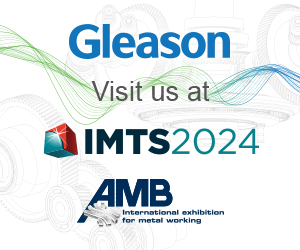 |
Crane Winch Gearbox Maintenance Guide Out Now
Crane & Transport Briefing
Instead of simple time-based maintenance, scheduling it according to the amount of work done is a better approach. That is according to European abnormal transport and mobile crane association ESTA which has just published a new guide on the subject. ESTA is asking owners of mobile cranes to reconsider their approach to winch gearbox maintenance.Read More
Interact Analysis Forecasts Growth in Global Gearbox and Geared Motor Markets
Power Transmission Engineering
The landscape of the global precision gearbox and geared motor market is undergoing significant transformation and is expected to grow by over 10 percent in 2025, as it recovers from an earlier-than-anticipated dip in 2023 and 2024. According to the latest data from market intelligence specialist Interact Analysis, strong demand will generate a compound annual growth rate (CAGR) of 7.9 percent—with the market increasing from $3.29 billion to $4.8 billion—between 2023 and 2028.Read More
Fanuc America Unveils New Robotics and Automation Campus
Gear Technology
Fanuc America has officially unveiled its new 650,000-square-foot West Campus facility in Auburn Hills, Michigan. The expansion increases the footprint in Michigan to over 2 million square feet and is part of Fanuc America’s strategic investment plan to support and advance industrial automation in North America. The West Campus represents a $110 million investment built on 67 acres of land.Read More
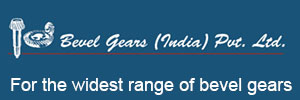 |  |
Liebherr to Build Manufacturing Center in Mississippi
Construction Equipment
Liebherr-Logistics GmbH, which will oversee the operations, provides logistics services for earthmoving machinery, components, concrete technology, tower cranes and maritime cranes. Liebherr said the new logistics distribution center for spare parts will serve its customers in South and North America. The company said it intends to establish a campus on the site, where various business units from different product segments of the company will operate in the future.Read More
NATO Awards Next-Gen Rotorcraft Platform Contracts
The Defense Post
NATO has contracted a trio of companies to study integrated platform concepts under the Next Generation Rotorcraft Capability (NGRC) program. Airbus Helicopters, Lockheed Martin Sikorsky, and Leonardo have each been contracted for the fifth NGRC concept study to identify and harness cutting-edge technologies to enhance the upcoming helicopter’s capabilities. The study seeks innovative “digital design and development processes and advanced materials and manufacturing,” NATO explained.Read More
A Misaligned Formulation for Planetary Gears With Analytical 3D Contact Characterization
Springer Link
In the study of planetary drivetrains, the substantially high transmitted loads lead to significant deflections in the supporting gear structures, which directly impact the gear pair alignment and alter the gear meshing. This contribution proposes an analytical formulation to model misaligned planetary gears by means of distributed gear contact forces.Read More
Advanced Distortion Control for Case Hardening of Transmission Components
Power Transmission Engineering
The LPC (Low-Pressure Carburizing) and HPGQ (High-Pressure Gas Quenching) process offers significant potential for advanced distortion control. The gas quenching process provides a more homogenous heat transfer coefficient on the surface of the quenched components when compared to quenching with liquids such as oil or polymers. In addition, the HPGQ process provides the flexibility to tailor the quench intensity specifically for the needs of the quenched components.Read More
 |  |
